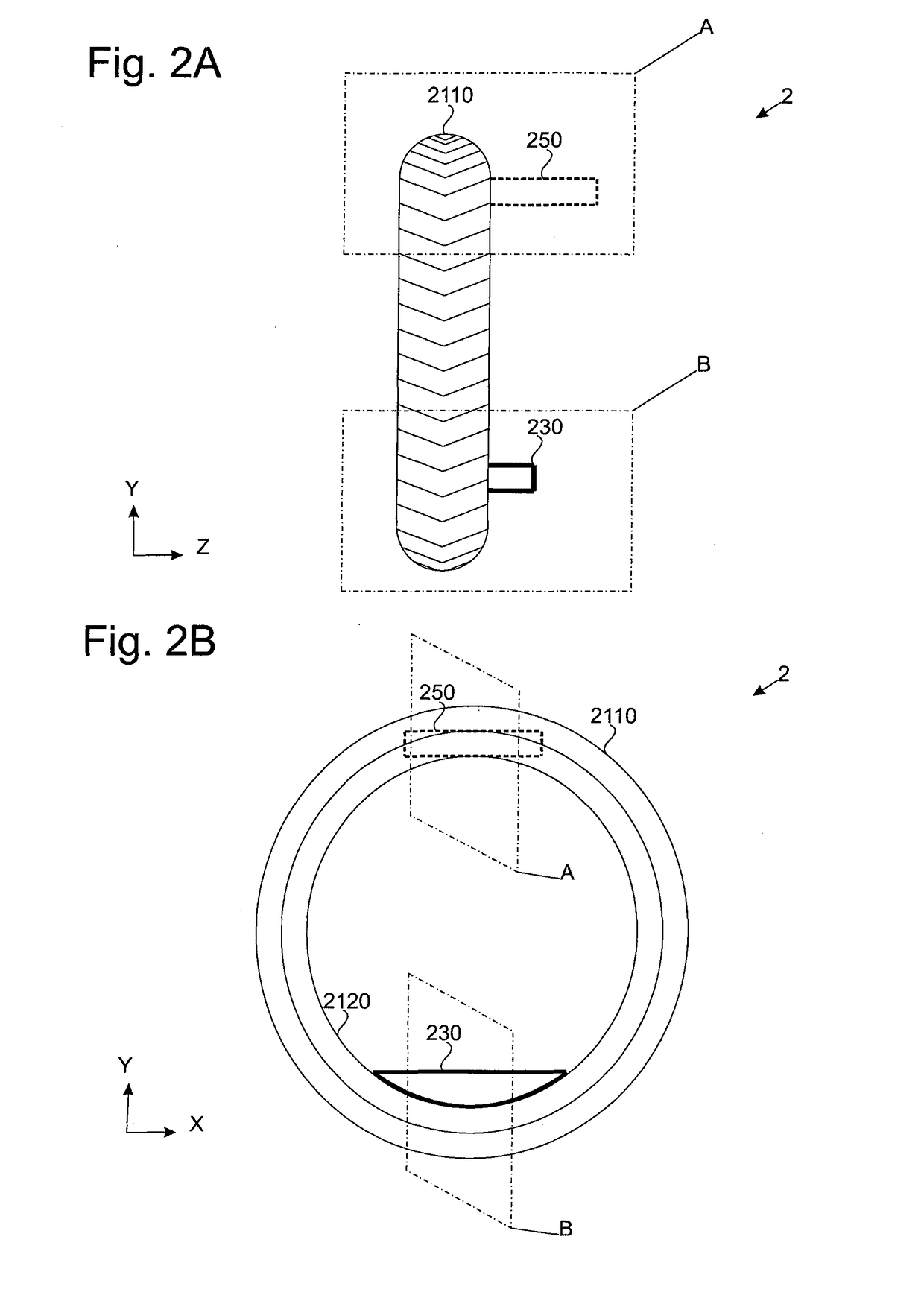Single wheel skate
a single-wheel skate and skate technology, applied in the field of roller skates, can solve the problems of difficulty in using roller skates on uneven surfaces, difficulty in adjusting the speed of skates, and difficulty in skating, and achieve the effect of convenient operation
- Summary
- Abstract
- Description
- Claims
- Application Information
AI Technical Summary
Benefits of technology
Problems solved by technology
Method used
Image
Examples
Embodiment Construction
[0040]FIG. 2A schematically illustrates a roller skate 2 according to an embodiment of the invention projected on the plane Z-Y containing the axis of the wheel of the roller skate whereas FIG. 2B illustrates a side view of the same roller skate projected on the plane X-Y parallel to the plane containing the wheel and perpendicular to the plane of FIG. 2A.
[0041]As can be seen in FIG. 2A, the roller skate 2 comprises a wheel comprising a first circular element 2110 and a second circular element 2120, inside the first circular element 2110. In a preferred embodiment, the second circular element 2120 is of a size such as to allow the presence of at least part of a shoe S of the user, in the direction of the length thereof, inside the second circular element 2120 in direction X, as illustrated in FIGS. 3A and 3B. In particular, the second circular element 2120 has an outer diameter substantially equal to the internal diameter of the first circular element 2110, with a difference between...
PUM
 Login to View More
Login to View More Abstract
Description
Claims
Application Information
 Login to View More
Login to View More - R&D
- Intellectual Property
- Life Sciences
- Materials
- Tech Scout
- Unparalleled Data Quality
- Higher Quality Content
- 60% Fewer Hallucinations
Browse by: Latest US Patents, China's latest patents, Technical Efficacy Thesaurus, Application Domain, Technology Topic, Popular Technical Reports.
© 2025 PatSnap. All rights reserved.Legal|Privacy policy|Modern Slavery Act Transparency Statement|Sitemap|About US| Contact US: help@patsnap.com



